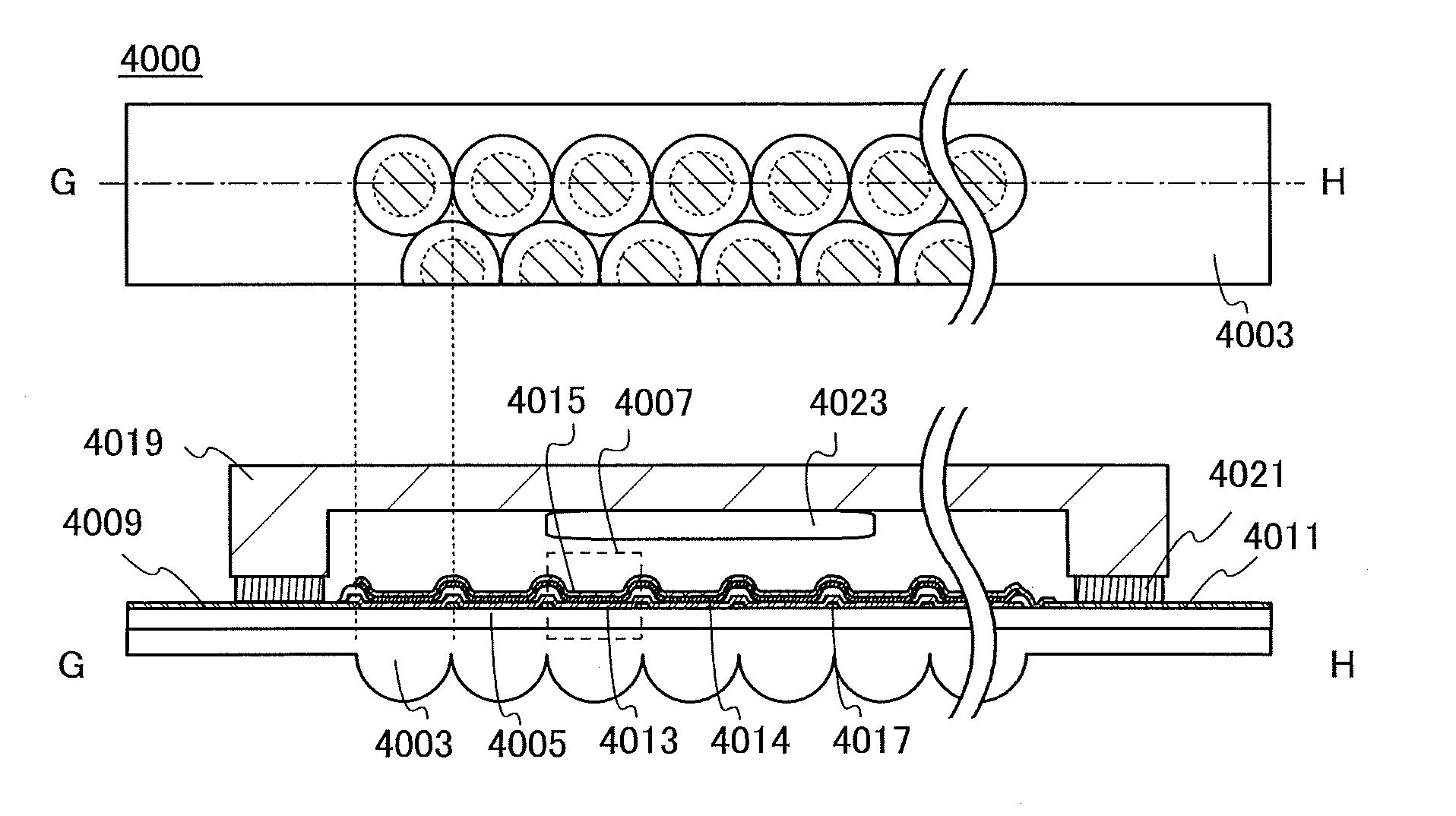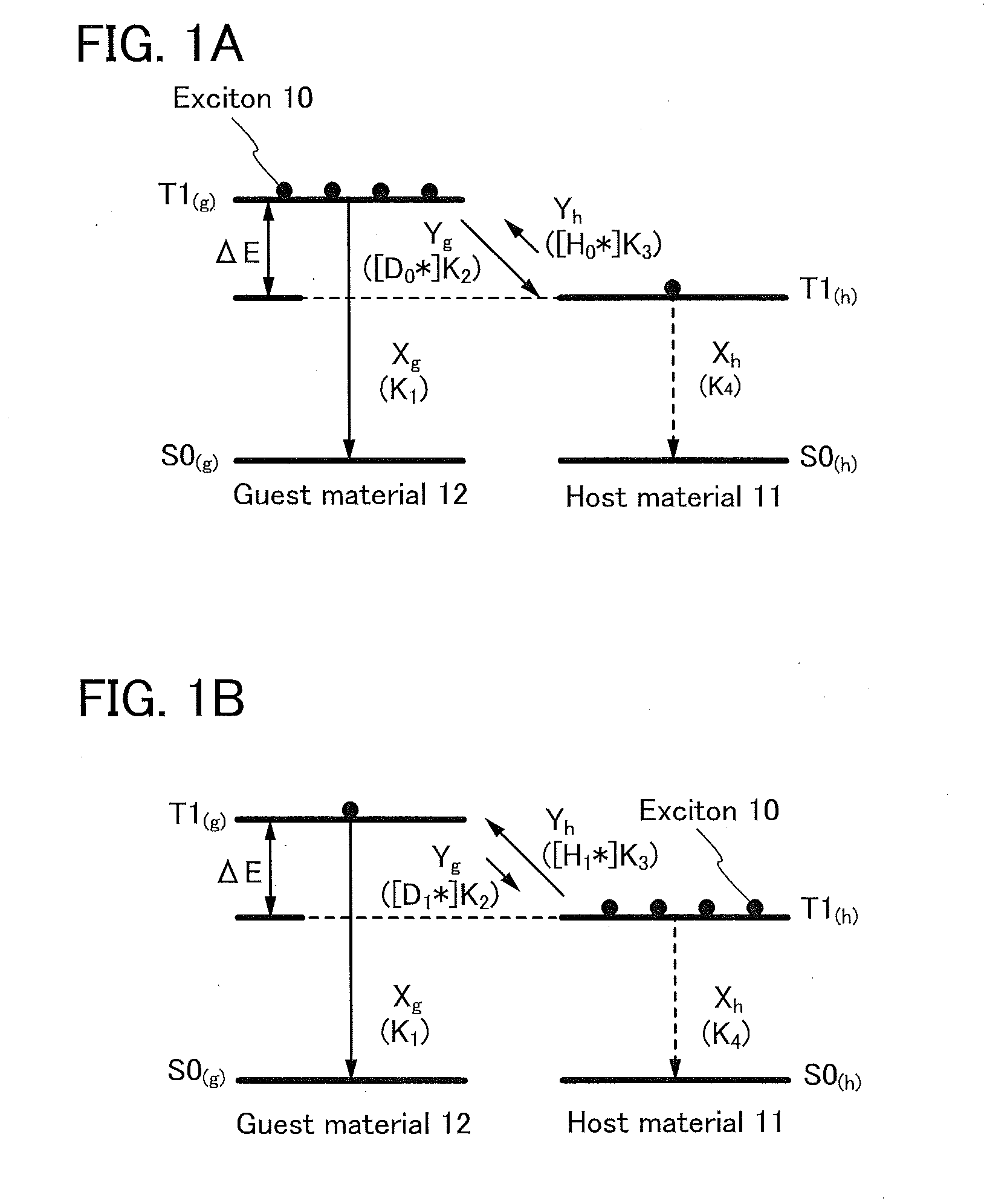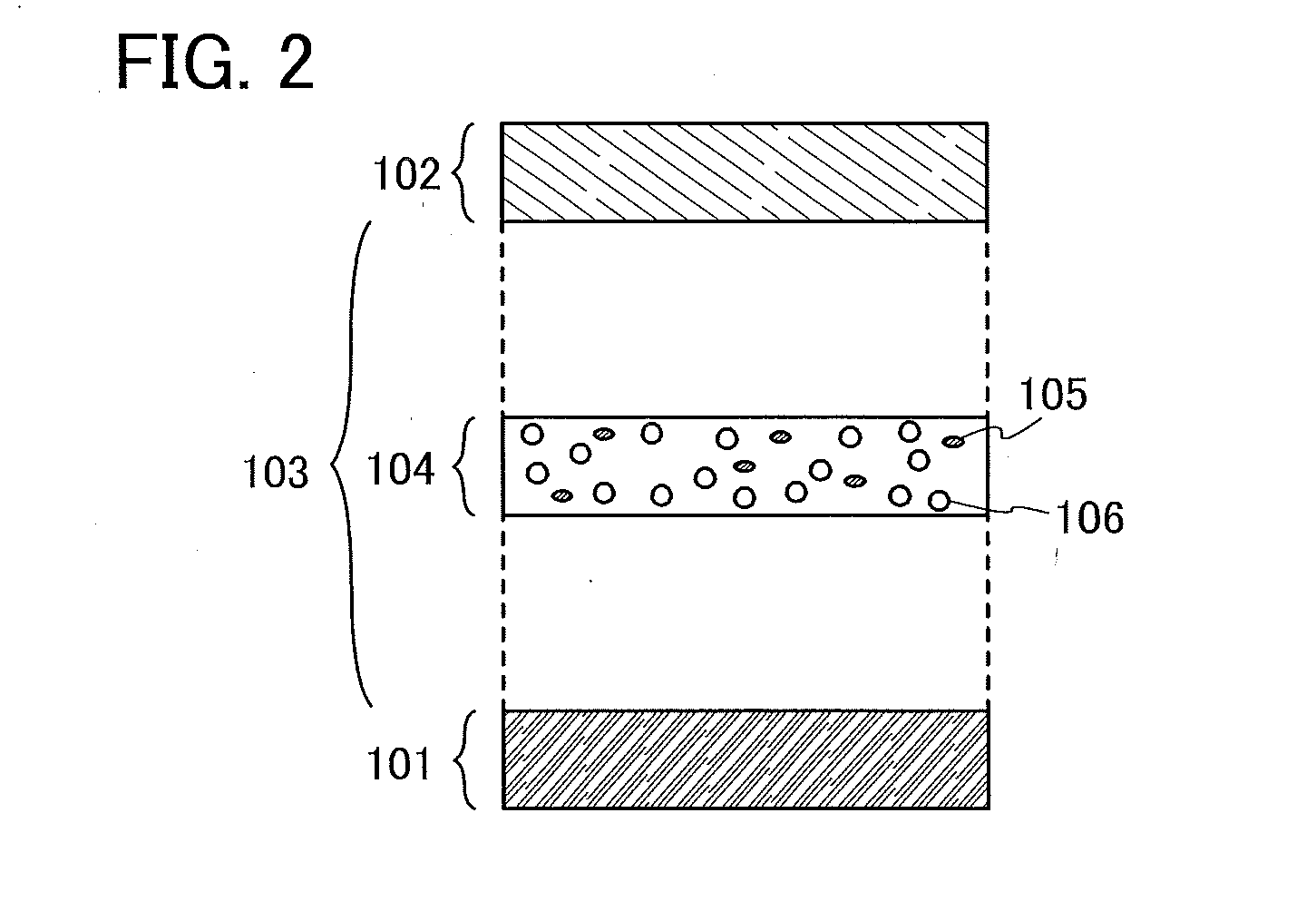Light-Emitting Element, Light-Emitting Device, Electronic Device, and Lighting Device
a technology of light-emitting devices and light-emitting elements, which is applied in the direction of solid-state devices, semiconductor devices, thermoelectric devices, etc., can solve the problems of chemical instability of the host material, and achieve the effects of high emission efficiency, long life and high reliability
- Summary
- Abstract
- Description
- Claims
- Application Information
AI Technical Summary
Benefits of technology
Problems solved by technology
Method used
Image
Examples
embodiment 1
[0045]In this embodiment, described are a concept and a specific structure of a light-emitting element of one embodiment of the present invention. The light-emitting element includes a host material capable of remaining chemically stable even if a phosphorescent compound having high emission energy is used as a guest material.
[0046]In a light-emitting element of one embodiment of the present invention, a light-emitting layer is provided between a pair of electrodes, and the light-emitting layer contains at least a host material and a guest material (the exciton concentration is in a range where concentration quenching does not occur). The relation between the relative emission intensity and the emission time of light emission obtained from these materials (e.g., photoluminesence (PL) by photoexcitation or electroluminescence (EL) by electric field excitation) is represented by a multicomponent decay curve. The relative emission intensity of the slowest component of the decay curve b...
embodiment 2
[0068]In this embodiment, an example of a light-emitting element of one embodiment of the present invention is described with reference to FIG. 3.
[0069]In the light-emitting element described in this embodiment, as illustrated in FIG. 3, an EL layer 203 including a light-emitting layer 206 is provided between a pair of electrodes (a first electrode (anode) 201 and a second electrode (cathode) 202), and the EL layer 203 includes a hole-injection layer 204, a hole-transport layer 205, an electron-transport layer 207, an electron-injection layer 208, and the like in addition to the light-emitting layer 206.
[0070]As in the light-emitting element described in Embodiment 1, the light-emitting layer 206 contains at least the first organic compound 209 serving as a host material and the second organic compound 210 serving as a guest material. Since the same substances described in Embodiment 1 can be used as the first organic compound 209 and the second organic compound 210, and description...
embodiment 3
[0087]In this embodiment, as one embodiment of the present invention, a light-emitting element (hereinafter referred to as tandem light-emitting element) in which a charge generation layer is provided between a plurality of EL layers is described.
[0088]The light-emitting element described in this embodiment is a tandem light-emitting element including a plurality of EL layers (a first EL layer 302(1) and a second EL layer 302(2)) between a pair of electrodes (a first electrode 301 and a second electrode 304) as illustrated in FIG. 4A.
[0089]In this embodiment, the first electrode 301 functions as an anode, and the second electrode 304 functions as a cathode. Note that the first electrode 301 and the second electrode 304 can have structures similar to those described in Embodiment 2. In addition, all or any of the plurality of EL layers (the first EL layer 302(1) and the second EL layer 302(2)) may have structures similar to those described in Embodiment 2. In other words, the structu...
PUM
 Login to View More
Login to View More Abstract
Description
Claims
Application Information
 Login to View More
Login to View More - R&D
- Intellectual Property
- Life Sciences
- Materials
- Tech Scout
- Unparalleled Data Quality
- Higher Quality Content
- 60% Fewer Hallucinations
Browse by: Latest US Patents, China's latest patents, Technical Efficacy Thesaurus, Application Domain, Technology Topic, Popular Technical Reports.
© 2025 PatSnap. All rights reserved.Legal|Privacy policy|Modern Slavery Act Transparency Statement|Sitemap|About US| Contact US: help@patsnap.com



